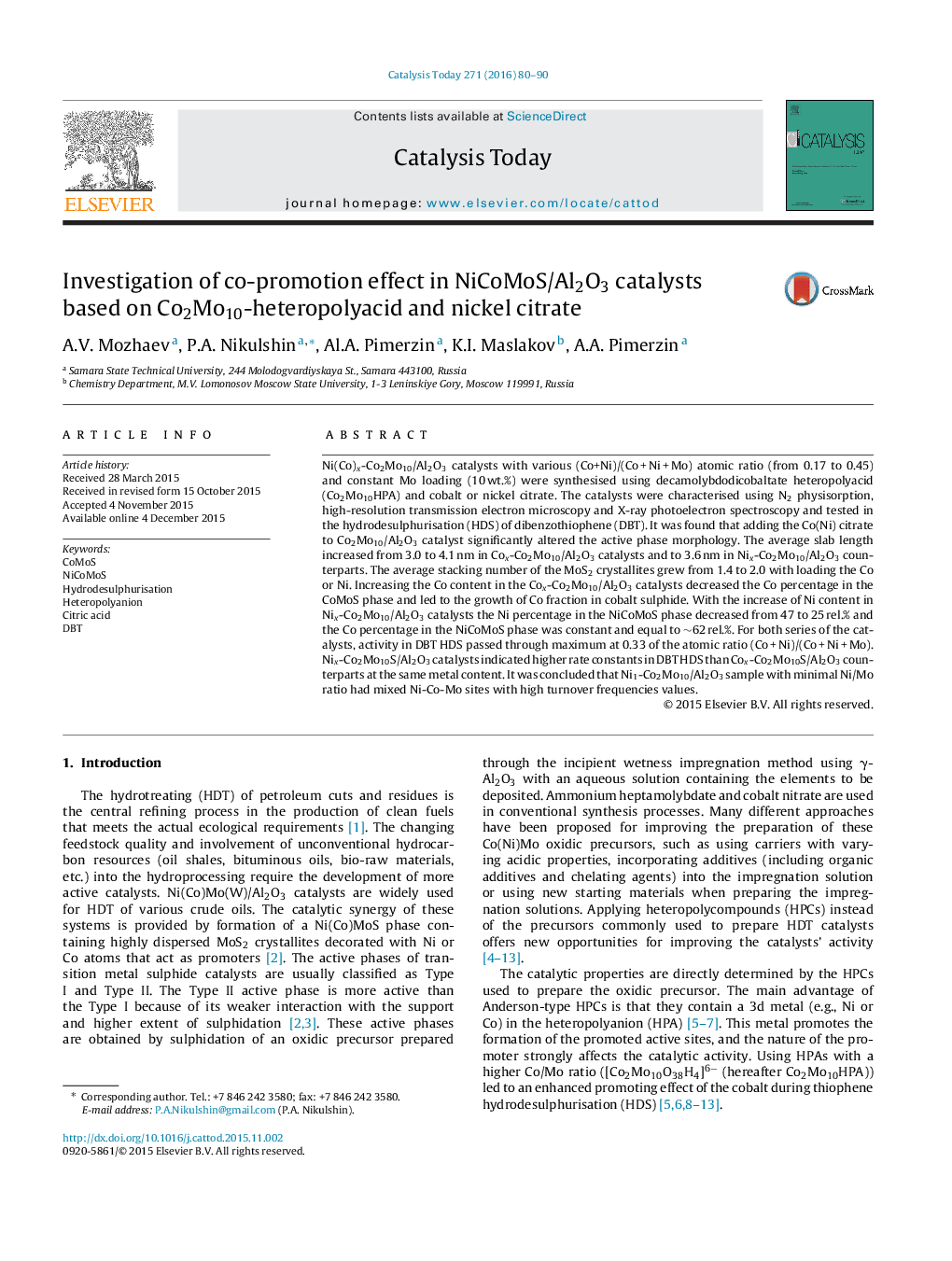| Article ID | Journal | Published Year | Pages | File Type |
|---|---|---|---|---|
| 53522 | Catalysis Today | 2016 | 11 Pages |
•NiCoMo/Al2O3 catalysts were prepared with Co2Mo10-heteropolyacid and Co(Ni) citrate.•Adding the Co(Ni) to Co2Mo10/Al2O3 altered the active phase structure and morphology.•Activity in DBT HDS passed through maximum at 0.33 of the molar ratio Co(Ni)/(Co + Ni + Mo).•NiCoMo/Al2O3 catalysts indicated higher rate constants in DBT HDS than CoMo/Al2O3.•NiCoMo/Al2O3 catalyst with minimal Ni/Mo ratio had NiMoS sites with the highest TOF number.
Ni(Co)x-Co2Mo10/Al2O3 catalysts with various (Co+Ni)/(Co + Ni + Mo) atomic ratio (from 0.17 to 0.45) and constant Mo loading (10 wt.%) were synthesised using decamolybdodicobaltate heteropolyacid (Co2Mo10HPA) and cobalt or nickel citrate. The catalysts were characterised using N2 physisorption, high-resolution transmission electron microscopy and X-ray photoelectron spectroscopy and tested in the hydrodesulphurisation (HDS) of dibenzothiophene (DBT). It was found that adding the Co(Ni) citrate to Co2Mo10/Al2O3 catalyst significantly altered the active phase morphology. The average slab length increased from 3.0 to 4.1 nm in Cox-Co2Mo10/Al2O3 catalysts and to 3.6 nm in Nix-Co2Mo10/Al2O3 counterparts. The average stacking number of the MoS2 crystallites grew from 1.4 to 2.0 with loading the Co or Ni. Increasing the Co content in the Cox-Co2Mo10/Al2O3 catalysts decreased the Co percentage in the CoMoS phase and led to the growth of Co fraction in cobalt sulphide. With the increase of Ni content in Nix-Co2Mo10/Al2O3 catalysts the Ni percentage in the NiCoMoS phase decreased from 47 to 25 rel.% and the Co percentage in the NiCoMoS phase was constant and equal to ∼62 rel.%. For both series of the catalysts, activity in DBT HDS passed through maximum at 0.33 of the atomic ratio (Co + Ni)/(Co + Ni + Mo). Nix-Co2Mo10S/Al2O3 catalysts indicated higher rate constants in DBT HDS than Cox-Co2Mo10S/Al2O3 counterparts at the same metal content. It was concluded that Ni1-Co2Mo10/Al2O3 sample with minimal Ni/Mo ratio had mixed Ni-Co-Mo sites with high turnover frequencies values.
Graphical abstractFigure optionsDownload full-size imageDownload high-quality image (159 K)Download as PowerPoint slide
